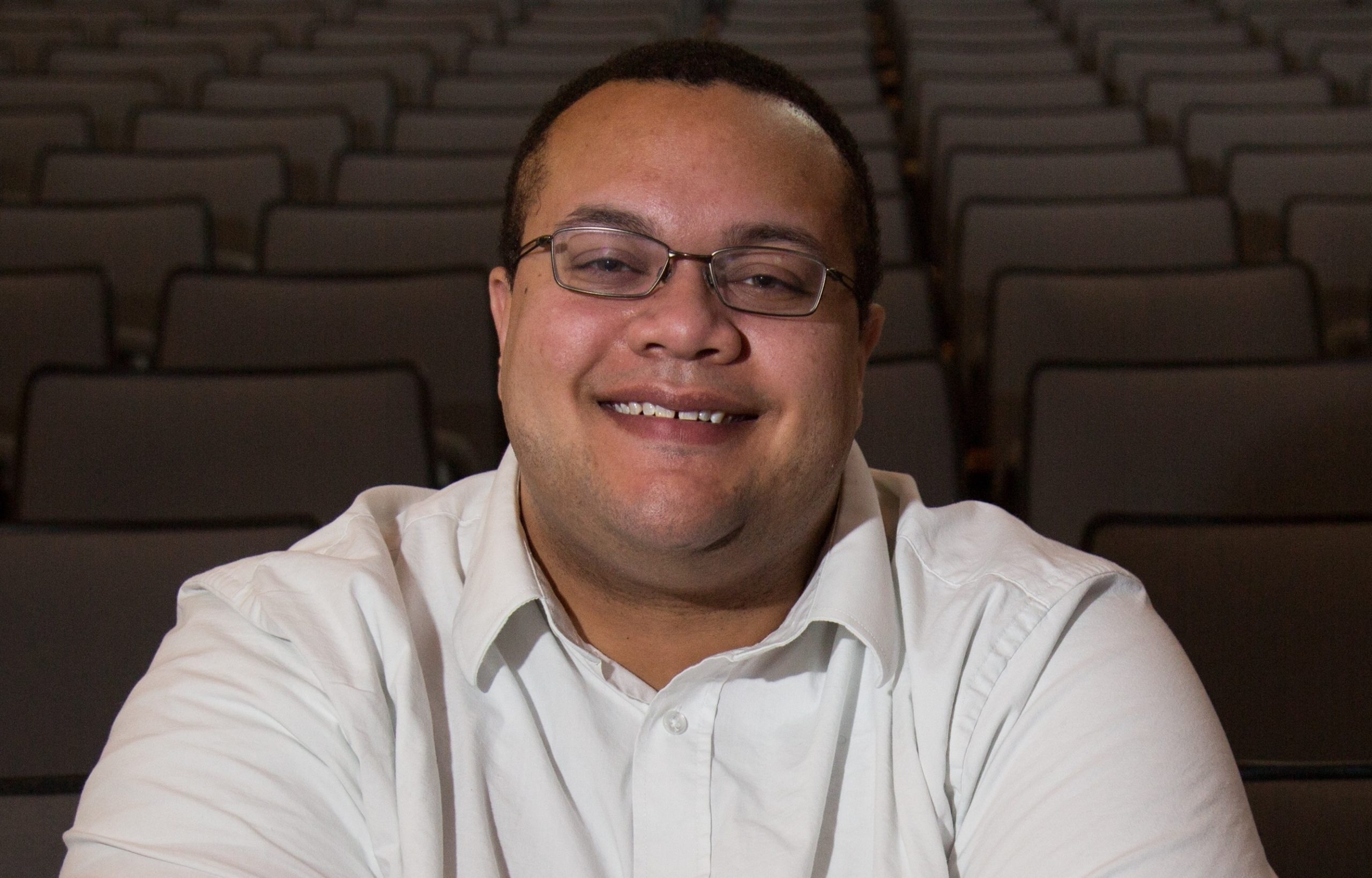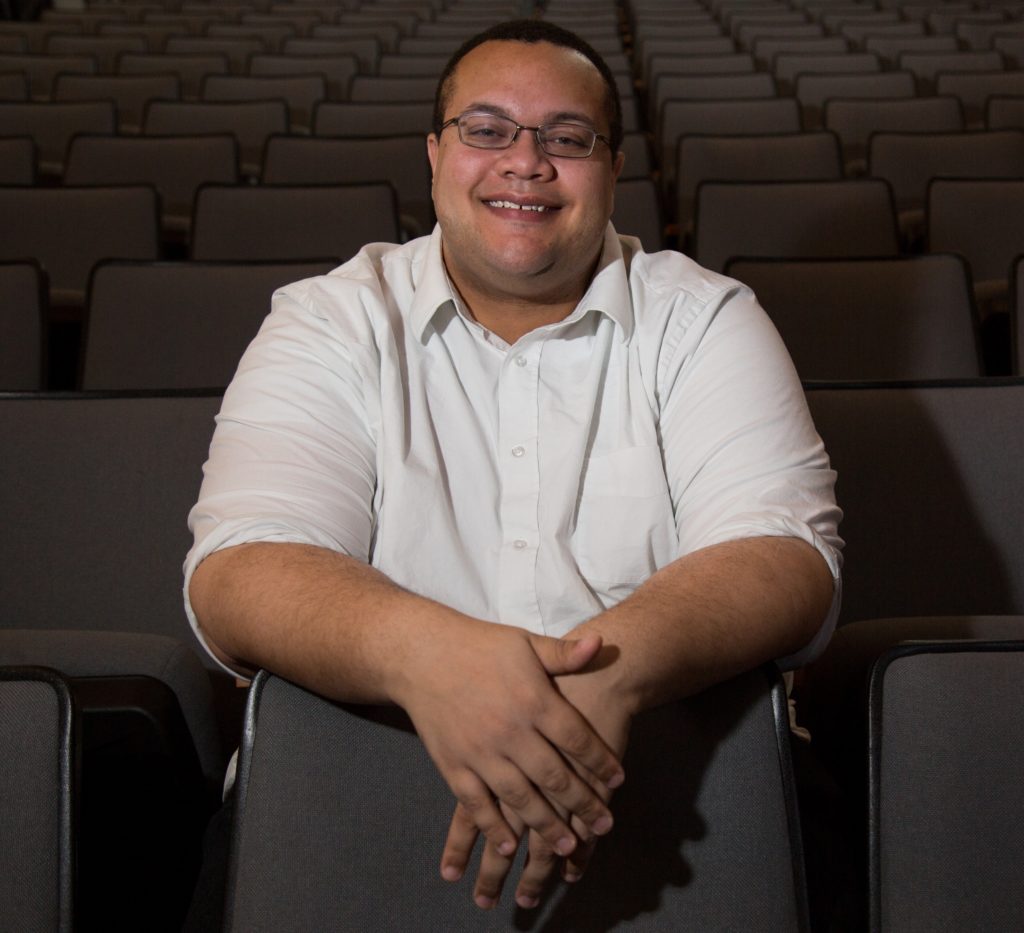
Critic Spotlight: February 2021
Jerald Raymond Pierce
Chicagoland critic
Primary outlet: American Theatre

When you took the position as associate editor of American Theatre magazine, what stories did you want to prioritize?
I spent about my first five years in Chicago dabbling in stage management, sound design and lighting design. I developed an affinity for design and backstage aspects of theater, which led to a few of my early freelance pieces for AT being about design and designers. When I came in, it was definitely a hope and priority for me to continue writing about the off-stage aspects of theater.
We are going on one year with an absence of live, in-person theater. How has that shifted your focus on what stories AT magazine can and should be telling?
In terms of “can,” the lack of in-person theater has had an obvious impact on AT (as it has many other outlets) due to the scaling back of staff. Staffing, and that staff’s bandwidth, goes a long way to determining the type, depth, and breadth of coverage. Frankly, AT is currently a team of two full-time staffers, which puts obvious restrictions on just how much of the country a national magazine can actually cover.
In terms of “should,” it’s a bit harder to say. I started at AT in February of last year. It felt like I was barely in the door before we were writing about the industry shutting down because of the virus.
I think less in-person theater has opened a lot of doors, at least for me, because it feels like there has been an opportunity for us to focus less on individual productions and more on big topics and the many major industry conversations that have been going on.
Without in-person theater taking its forced hiatus, I’m not sure we have We See You, White American Theatre, or at least we might not have seen it talked about the same way. This absence of in-person theater has given me room to take time with industry-wide topics and issues that I’m not sure I would have had had there still been in-person theater and that incessant pace of theater productions.
Theater artists are incredibly creative. Have you covered any examples that you felt were particularly innovative and might have a chance to sustain over time?
I love what everyone is doing to challenge what we consider theater. I enjoy seeing people challenging the form, because theater is a live art, it should evolve. And hopefully it will continue to evolve.
I cross my fingers regularly that live streaming theater is here to stay. It opens massive doors in terms of access for those with disabilities or those who are just not able, for whatever reason, to attend theater in-person. (Not to mention that, selfishly, I would love to be able to watch more regional productions from across the country without having to leave Chicago.)
I’m just not sure how you can honestly look at the benefits of live-streaming theater and want to go back to the way things were. So I guess I’d give a hat tip to companies like American Shakespeare Center (setting aside the debate over them bypassing Equity) who have experimented with simulcasting live, in-person productions. That needs to be here to stay.
In addition to being an editor, as a reporter you cover trends in theater on a national level. What are some of the things you covered that you’ve found to be most important?
That’s tough. The self-deprecation kicks in and “important” becomes so subjective (what even counts as “important” these days?). If we define “important” as times I believe my reporting has added to the conversation in a meaningful way, I’d say my reporting on how anti-racism work plays into different areas of the field.
Writing about casting, staffing, stage management, and tech rehearsals through that lens has, I hope, helped the larger conversation the industry is having. Similarly, I hope my recent article on the potential of a Federal Theatre Project opened up some conversations.
What do you miss about going to shows?
Honestly, leaving them. Regardless of if I liked a show or not, my favorite thing was always walking down the random streets of Chicago afterwards, wandering to a bus stop or train station, and trying to piece together my thoughts after a show.
What is one tip you have for someone who is interested in pitching to your magazine?
Look for gaps in our coverage. The most memorable pitches for me are ones where I read it and wonder why we didn’t think of it ourselves. I’ll pound the table for any pitch that tells me what our coverage is missing and why this particular story is the story that can and should fill that gap. If you think, “why on earth is no one talking about this?” that’s the story I want to be pitched.
Can you share two of your favorite pieces?
June 1, 2020: “Tired but not daunted in the Twin Cities”
Didn’t get much of a response when it dropped, but I still love this piece. Some of these interviews have stayed with me for months.
Oct. 23, 2020: “Stage Vs. Screen Becomes a Union Battleground”
I love this piece because I enjoyed trying to evenly argue both sides. There are so many issues to report on these days where there is absolutely a right side and a wrong side. There was (and still is, if you ask me) a lot of gray area in the middle of this debate. I loved trying to piece it together.
— Interview by David John Chávez. Edited for length and clarity.





Sorry, the comment form is closed at this time.